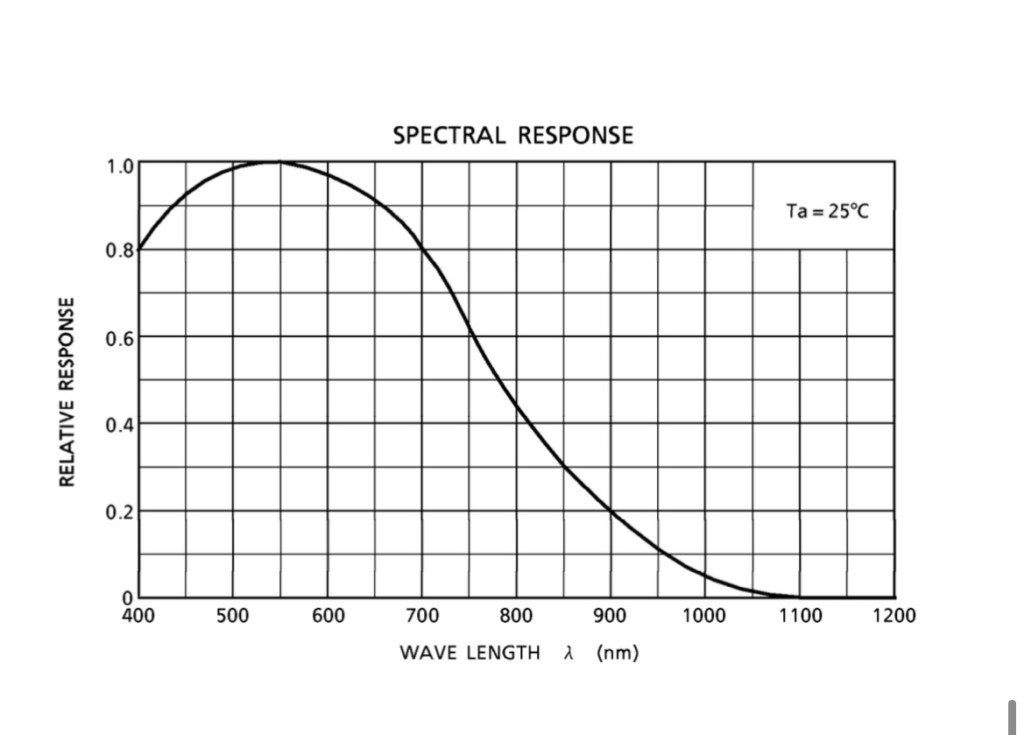No. The spectral response of these spectrometers is not flat. In other words, an intensity of 0.5 at 400 nm does not correspond to the same absolute intensity when you see an 0.5 reading at 600 nm.
The non-flat response does not matter when doing absorption experiments since the clear cuvette readings are used in the calibration. However, in Intensity mode there is no intensity calibration.
You can make relative intensity comparisons if the wavelengths are not too different–the problem arises when very different wavelengths are involved.
Calibrating a photometric device so that intensities across many wavelengths can be compared is very complex, as even removing and replacing the fiber optics will change the calibration. As a result it is not practical to provide a device that has a flat or corrected intensity response.
In contrast to the uncalibrated intensity response, the *wavelength* calibration of the Vernier/Ocean Optics devices is very accurate. No further calibration is needed, and the location of spectral peaks is accurate.
See also
When should I use the Intensity Correction for my Vernier-branded Spectrometer?
The theoretical spectral response for the SpectroVis spectrometer detector is shown in the following graph. However, additional response variations from the mirrors, grating, manufacturing variations in the detector, and optical fiber add additional variations to this response. As a result it is not possible to apply this response curve to correct for the entire spectral variation in response for the spectrometer system.

